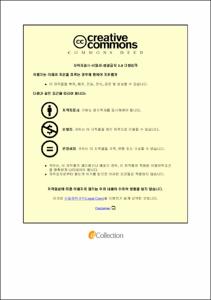가도세틱산 조영증강 MRI에서의 국소 간 병변의 크기 측정과 LI-RADS 분류에 대한 영향
- Abstract
- 목적: 가도세틱산 조영증강 자기공명영상(MRI)에서 국소 간 병변의 크기를 측정하는 데 있어 병리학적 측정과 비교하여 가장 좋은 영상 시퀀스를 찾고, 간 영상 판독보고 및 데이터 시스템(LI-RADS)에 미치는 임상적 영향에 대해 알아보고자 한다.
연구 재료 및 방법: 가도세틱산 조영증강 MRI를 시행 받고 이어서 간 절제술을 시행 받은 253명의 환자(279개의 병변)가 후향적으로 포함되었다. 두 명의 영상의학과 의사가 독립적으로 6개의 MRI 시퀀스(T1 강조영상, T2 강조영상, 동맥기, 문맥기, 이행기, 간담도기)에서 병변의 가시화 점수와 크기를 측정하였고, 병변의 크기에 따라 LI-RADS 분류를 하였다. 피어슨 상관계수로 MRI에서 측정한 크기와 병리학적으로 측정된 크기의 상관성을 평가하고, 반복측정 분산분석으로 가시화 점수와 MRI와 병리학적 측정 간의 절대적 차이를 비교하였다. 각 MRI 시퀀스에서 측정된 크기에 따른 LI-RADS 분류는 Cochran’s Q test를 이용하여 비교하였다.
결과: 279개의 병변 중 247개의 간세포암, 21개의 간세포암이 아닌 악성종양, 11개의 양성병변이 포함되었다. 6개의 MRI 시퀀스 중 간담도기가 가장 높은 가시화 점수(4.1 ± 0.6)와 높은 상관계수(r = 0.965)를 보였다. MRI와 병리학적 측정 간의 절대적인 차이는 이행기에서 가장 낮았으며(2.3 mm ± 2.2), 간담도기에서 다음으로 낮았다(2.4 mm ± 2.1). LI-RADS 분류에서 간담도기에서 분류 불가능(LR-NC)인 경우가 없었다.
결론: 간담도기는 가도세틱산 조영증강 MRI에서 가시성, 병리학적 소견과의 상관성, LI-RADS 분류를 고려했을 때 국소 간 병변의 크기를 측정하는 데 임상적으로 유용할 것으로 기대된다.|Purpose: We aimed to determine the optimal image sequence for measurement of hepatic observations on gadoxetate disodium-enhanced MRI in comparison with pathologic measurement, and to evaluate its clinical impact on the Liver Imaging Reporting and Data System (LI-RADS) v2018 classification.
Materials and Methods: Two hundred and fifty-three patients (279 hepatic observations) who underwent gadoxetate disodium-enhanced MRI and subsequent hepatectomy were retrospectively included. Two radiologists independently evaluated the visualization score (five-point scale) and size of each observation on six MRI sequences (T1-weighted, T2-weighted, arterial-phase, portal venous-phase, transitional-phase [TP], and hepatobiliary-phase [HBP] images) and assigned a LI-RADS category. Correlations between MRI and pathologic measurements were evaluated using Pearson correlation coefficients. A repeated measures analysis of variance with Bonferroni post-hoc comparison tests was used to compare the visualization scores and absolute differences between MRI sequences and pathologic measurements. The LI-RADS classification according the size measurement of each MRI sequence was compared using Cochran’s Q test with a post-hoc McNemar’s test.
Results: The 279 observations included 247 hepatocellular carcinomas (HCC), 21 non-HCC malignancies, and 11 benignities. Of the MRI sequences, HBP had the highest visualization score (4.1 ± 0.6) and correlation coefficient (r = 0.965). The absolute difference between MRI and pathologic measurement was lowest on TP (2.3 mm ± 2.2), followed by HBP (2.4 mm ± 2.1). In the LI-RADS classifications, HBP had no LI-RADS category noncategorizable (LR-NC).
Conclusion: Hepatobiliary-phase images are clinically useful for measuring hepatic observations on gadoxetate disodium-enhanced MRI, especially regarding visibility, correlation with pathologic findings, and LI-RADS classification.
- Issued Date
- 2022
- Awarded Date
- 2022-02
- Type
- dissertation
- Alternative Author(s)
- Choi Ji Young
- Affiliation
- 울산대학교
- Department
- 일반대학원 의학과의학전공
- Advisor
- 최상현
- Degree
- Master
- Publisher
- 울산대학교 일반대학원 의학과의학전공
- Language
- eng
- Rights
- 울산대학교 논문은 저작권에 의해 보호 받습니다.
- Appears in Collections:
- Medicine > 1. Theses (Master)
- 파일 목록
-
-
Download
 200000603392.pdf
기타 데이터 / 1.4 MB / Adobe PDF
200000603392.pdf
기타 데이터 / 1.4 MB / Adobe PDF
-
Items in Repository are protected by copyright, with all rights reserved, unless otherwise indicated.